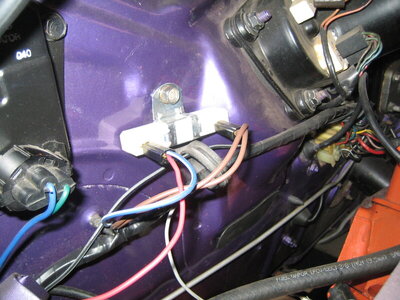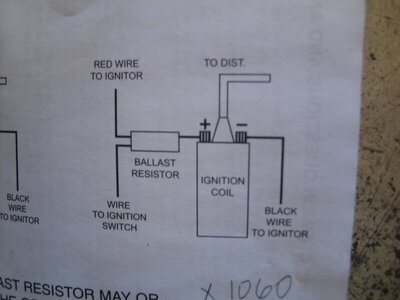moparchris
Well-Known Member
I could have also titled this" After 40 years of this crap I still feel stupid"
So I installed the basic Pertronix kit on my 71 GTX. Black wire to Neg. on the Coil. Per the instructions I spliced the Red wire to the Ignition side of the Ballast. Car has weak spark coming out of coil and weak spark at the plugs. It appears to be not enough voltage to provide a strong enough spark to allow the car to run. I have watched a couple of idiot videos and everyone just runs both Red and Black wires straight to the coil. I feel like I followed the instructions properly so WTF??
Photo 1 shows the Red Pertronix wire spliced to the Blue Ignition wire on the ballast. Photo 2 shows instructions.
The center carb accelerator pump cover cracked and started a huge fuel leak today as well so the car is down while I wait for a new pump cover to arrive. I will take any input on the ignition issue but it will be a week or so before I can get back at it.


So I installed the basic Pertronix kit on my 71 GTX. Black wire to Neg. on the Coil. Per the instructions I spliced the Red wire to the Ignition side of the Ballast. Car has weak spark coming out of coil and weak spark at the plugs. It appears to be not enough voltage to provide a strong enough spark to allow the car to run. I have watched a couple of idiot videos and everyone just runs both Red and Black wires straight to the coil. I feel like I followed the instructions properly so WTF??
Photo 1 shows the Red Pertronix wire spliced to the Blue Ignition wire on the ballast. Photo 2 shows instructions.
The center carb accelerator pump cover cracked and started a huge fuel leak today as well so the car is down while I wait for a new pump cover to arrive. I will take any input on the ignition issue but it will be a week or so before I can get back at it.




















